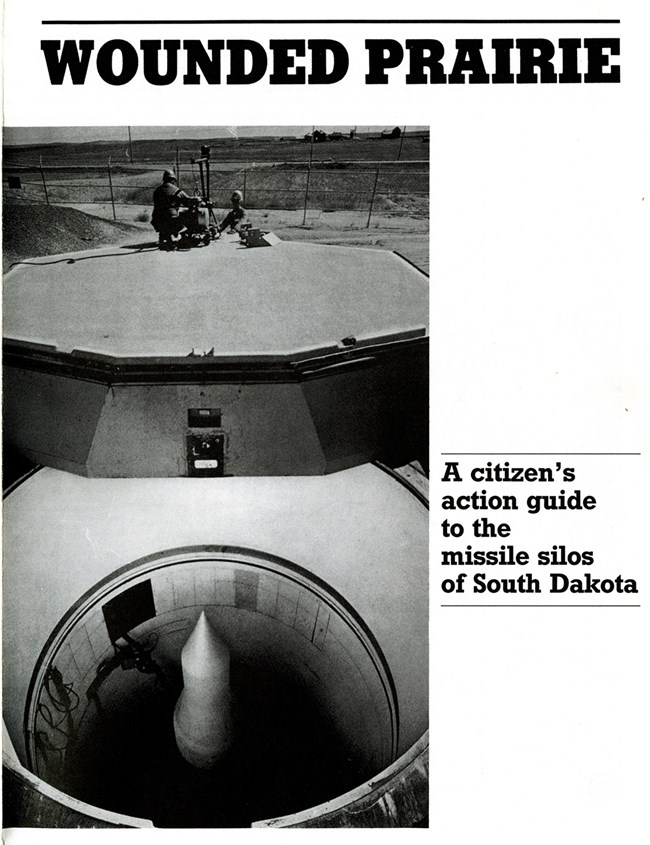Last updated: October 20, 2020
Article
Mapping the Missile Fields

NPS/MIMI 2287
By the mid-1980s, the actions of locally based anti-nuclear activists across the country inspired other groups like Nukewatch, based in Luck, Wisconsin, to undertake consciousness-raising projects of their own. It occurred to members of the organization that while the Soviet Union knew where all of the American ICBMs were based (and had targeted them with their own ICBMs), the location of these facilities had largely been forgotten by the American public.
Nukewatch’s Missile Silo Project, which resulted in the mapping of one thousand missile silo sites across the country, was intended to be a high profile project capable of furthering public discussion on nuclear weapons. At all six missile fields, local activists volunteered to drive the countryside and record driving directions to all locations, while maintaining legal distances from all facilities. Jay Davis, a local peace activist, participated in the mapping of the rural missile sites in South Dakota and described an encounter with Air Force security personnel at a missile silo,
“. . . eventually we came to a missile silo right near State Highway 34 and there was a semi-truck backed up right onto the pad inside the perimeter of the fence and there were a couple of soldiers, from the Air Force I suppose, with machine guns guarding the missile silo and the semi-truck. And we stopped there and, I mean, it was obvious they weren’t unloading furniture and this one soldier with the machine gun came over to my car as I was writing down the directions to that silo and also giving it a name and he said, can I help you with anything when I rolled down the window. And I said no thanks we’re just tourists. And of course he knew we weren’t tourists, but the point was we had a right to be out there driving on the back roads whatever it was we were doing this is supposed to be a free country.”
One of the traditions of this project was that the volunteers provided informal names to each silo and control center. These informal designations are a combination of the names of those who mapped the sites, or political and pop cultural references from the era. During the mapping of the missile sites in South Dakota, Delta- 01 was assigned the name of “Mike and Beth’s Launch Control Center” after Mike Sprong and Beth Preheim, peace activists that mapped the Delta Flight and directed the mapping project in South Dakota. Delta- 09 was believed to be assigned the name “Cassandra’s Missile” for Cassandra Dixon, a peace activist who served as director of Nukewatch at the time the organization coordinated the missile field mapping project.
In 1988, Nukewatch published the book, Nuclear Heartland, which mapped missile silo sites by state and provided an overview of the history of ICBM deployment and the development of national and local resistance movements. As stated by Sam Day, founder of Nukewatch, in the introduction to Nuclear Heartland, the goal of this project was to raise awareness and spark a critical debate of the dangers of the continued presence of these weapons and the real threat of a nuclear war. The organization also hoped their maps and information might prompt public visits to the sites by concerned citizens, other activists, or even vacationers.

NPS/MIMI 2287
